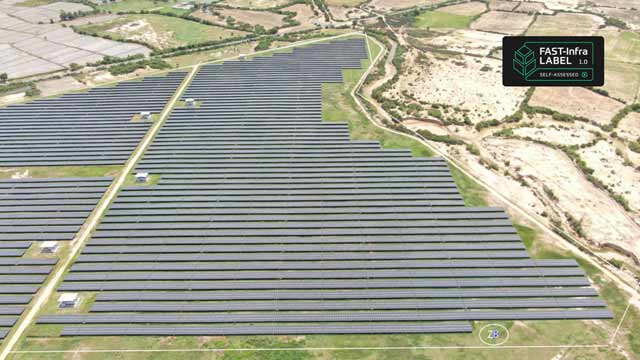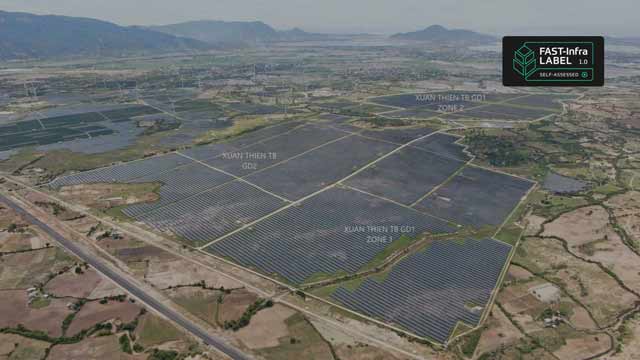
Driving Institutional Investment in Sustainable and Resilient Infrastructure
What’s a Rich Text element?
The rich text element allows you to create and format headings, paragraphs, blockquotes, images, and video all in one place instead of having to add and format them individually. Just double-click and easily create content.
H1
H2
H3
H4
H5
H6


Static and dynamic content editing
A rich text element can be used with static or dynamic content. For static content, just drop it into any page and begin editing. For dynamic content,

add a rich text field to any collection and then connect a rich text element to that field in the settings panel. Vsadsadsdasdasdasdasdoila!
- A rich text element can be used with static or dynamic content. For static content, just drop it into any page and begin editing. For dynamic content, add a rich text field to any collection and then connect a rich text element to that field in the settings panel. Voila!
- t to that field
- t to that field
-
How to customize formatting for each rich text
How to customize formatting for each rich text
How to customize formatting for each rich text
Headings, paragraphs, blockquotes, figures, images, and figure captions can all be styled after a class is added to the rich text element using the "When inside of" nested selector system.
Institutional investors, managing approximately 90 trillion dollars in assets, wield substantial influence over global financial markets and play an increasing role in developing resilient assets. Their investment decisions characterised by a long-term outlook and fiduciary responsibilities towards their beneficiaries drive market trends and have the potential to shape transformative infrastructure projects. However, investing in sustainable infrastructure presents significant challenges, including navigating complex regulations, evaluating and mitigating project-specific risks, and accessing reliable sustainability data that ensure the long term financial and sustainability performance of the asset. The FAST-Infra Label addresses these challenges by providing an innovative, standardized framework that empowers investors to make informed investment decisions.
Institutional Investors and Their Global Impact
Institutional investors, including pension funds, (re-) insurance companies, foundations, and endowments, are influential market movers whose investment decisions shape entire industries globally. With vast capital under management, long-term horizons and high-degree of investment sophistication, they are uniquely positioned to pursue complex investment opportunities. Their ability to invest directly and balance risk with reward enables them to support infrastructure projects that align with both their financial objectives and broader societal benefits in areas such as renewable energy, transportation, and social infrastructure.
By directing capital toward resilient infrastructure that meets evolving environmental and social standards, these investors send powerful market signals, fostering innovation and encouraging the adoption of sustainable and environmentally responsible practices.
Investment Strategies to Balance Risk and Reward
Infrastructure investments offer typically a combination of steady cash flows and returns that provide a hedge against inflation in many instances. These attributes are crucial for institutional investors to meet their long-term liabilities and fulfill their fiduciary mandate. Depending on their risk appetite, their investment strategies can be tailored to different project stages, enabling a balanced risk and reward.
- Greenfield Projects (Pre-Construction)
In early stage investments, institutional investors have the opportunity to influence project design and thus enhance the sustainability credentials of the asset. While these projects offer higher returns, they also come with greater risks, including construction delays, cost overruns, and uncertainties around regulatory approvals. Despite the higher risks, early investments in sustainable and resilient infrastructure make a significant impact by delivering on the additional benefits the world urgently needs. - Brownfield Projects (Post-Construction)
Investments in operating assets generally provide stable and predictable cash flows. While their returns may be lower than early-stage investments, the reduced exposure to construction risks makes them appealing to investors seeking long-term cash-flow consistency and reliability.
Institutional investors’ impact differs in each case. In the pre-construction phase, they can actively shape sustainability while earning higher returns. When investing in brownfield projects, they can still promote more sustainable operations by liaising with asset owners to adopt better practices.
The Challenges and Complexities of Financing Sustainable Infrastructure
Attracting institutional investors to sustainable infrastructure projects presents a range of challenges that demand both innovative solutions and careful diligence.
- Regulatory Complexity
Infrastructure projects must adhere to a variety of regulations that vary by jurisdiction. These regulations also involve environmental impact, social equity, and governance practices. Keeping up with evolving standards is crucial for avoiding compliance pitfalls that can affect both financial performance and reputation. - Sustainability Data Disparities
Reliable sustainability data is the foundation for sound investment decisions. However, the lack of consistency in reporting and the use of outdated, non-essential metrics often complicate risk assessments. This inconsistency in data makes it difficult to perform thorough due diligence and benchmark asset performance. - Project Diversity and Knowledge Gaps
The wide range of infrastructure projects, from renewable energy plants to road transportation networks, presents its own inherent set of challenges/risks. Many institutional investors themselves lack the technical skills and rely on external experts such as consultants and/or asset managers to bridge gaps in their skillset for this asset class and support their investment operations.
By addressing these challenges head on, investors can better integrate environmental, social, and governance considerations into their overall risk management strategies and hence, improving the overall risk/return profile of their investment.
FAST-Infra Label: The Key to Informed Decision Making
Spearheaded by leading global infrastructure investors, the FAST-Infra Label is creating the standardization and data availability that the sustainable infrastructure market needs to make better-informed decisions, manage risk and unlock private investment to deliver positive impact globally. This framework provides several key benefits.
- Enhanced Credibility
FAST-Infra Self-Assessed and Verified Labels provide a benchmark of sustainable performance for infrastructure. The standardized, commonly accepted framework of high-quality data across asset types helps to build investor confidence in the sustainable infrastructure market. - Streamlined Due Diligence
The label is aligned with over 55 globally recognized standards and frameworks, bringing together key sustainability indicators including climate resilience measures and governance into a single unified assessment. By aligning with these critical metrics, the Label simplifies the due diligence process, eliminating the need to reconcile multiple data sources. This streamlined approach allows investors to focus on projects that align with rigorous sustainability criteria. - Data Transparency and Risk Management
The FAST-Infra Label Application Portal, developed by Bloomberg, streamlines project submissions for the FAST-Infra Label. By enhancing transparency and comparability, it simplifies due diligence for investors and supports informed investment decisions.
The FAST-Infra Label provides institutional investors with a standardized framework to navigate the complexities of sustainability in infrastructure investments with enhanced clarity and confidence. By addressing key challenges, such sustainability data inconsistencies, and knowledge gaps, the label provides a standardized framework that enhances transparency and comparability. This empowers investors to make well-informed decisions. Applicable at all stages of infrastructure development, the label facilitates a balanced approach to achieving strong financial performance by integrating best sustainability and resilience practices into investment strategies.

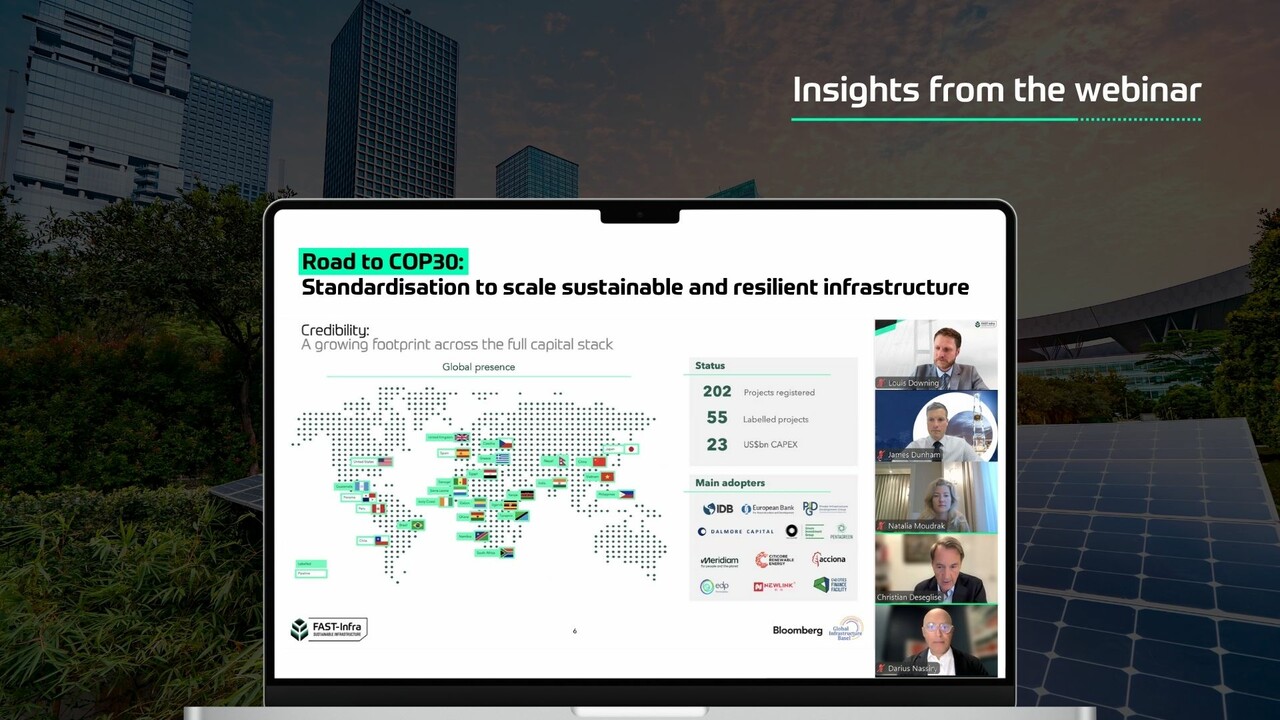


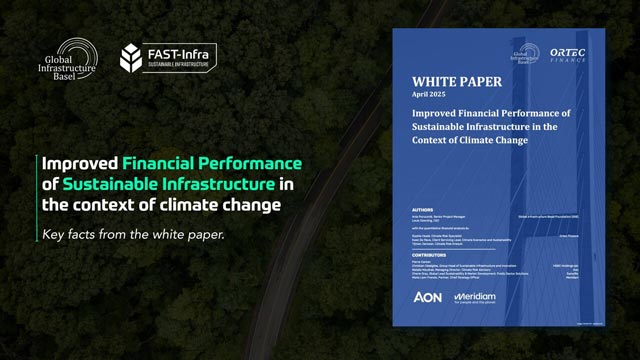


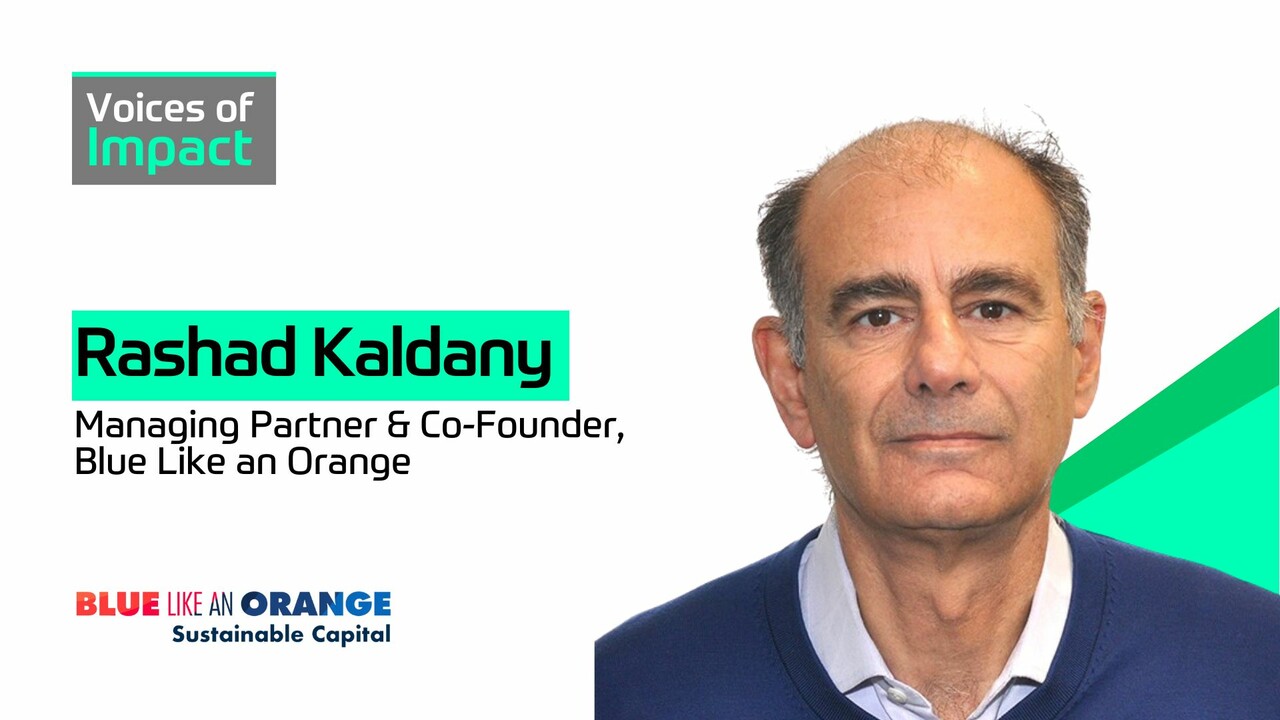


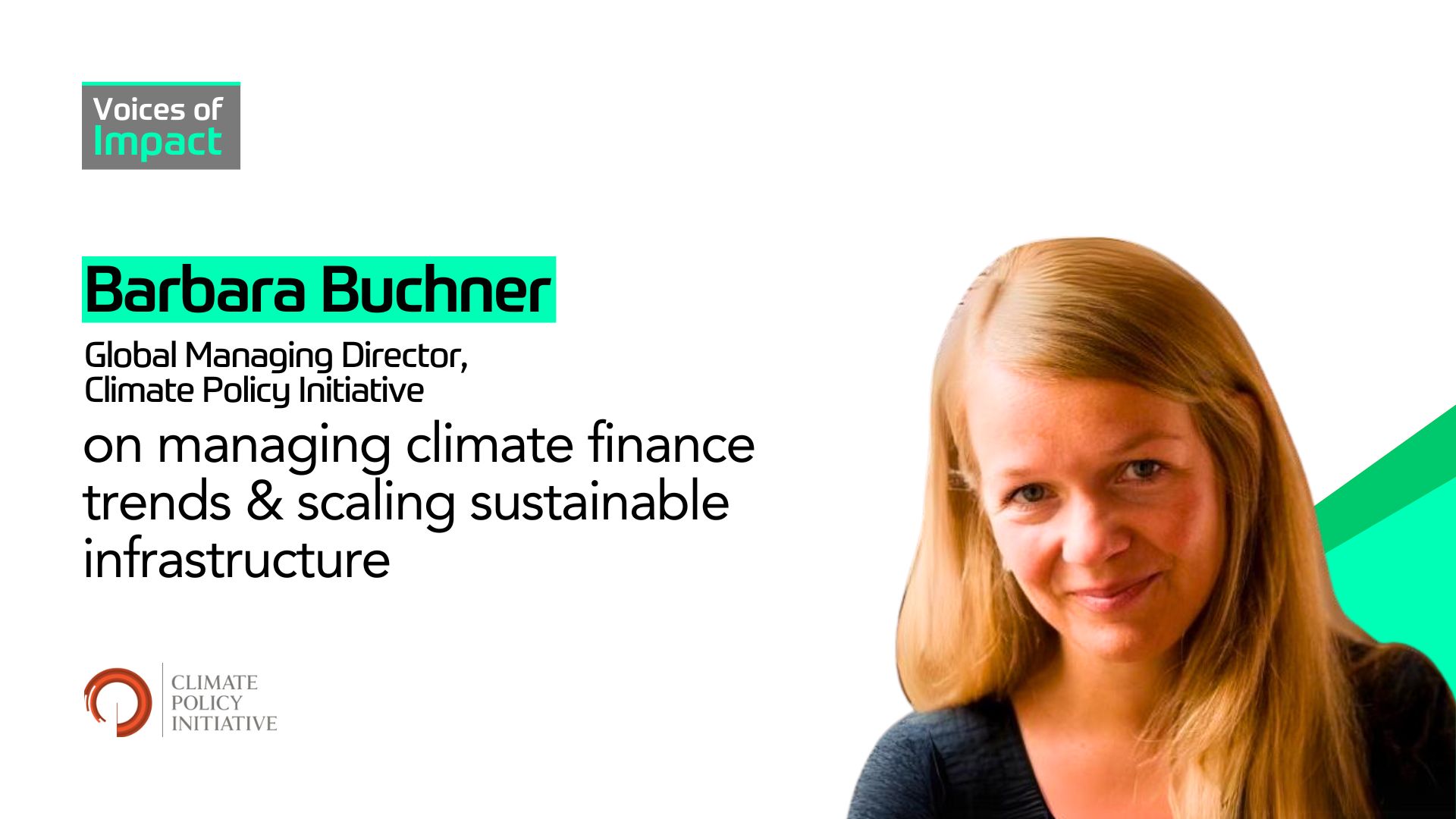
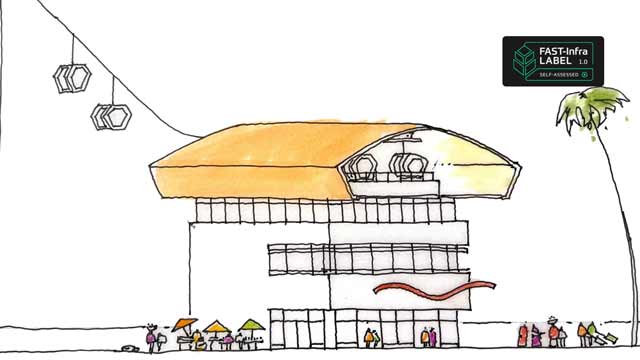






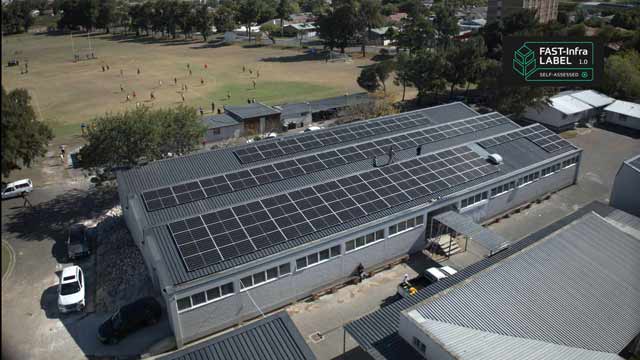

.jpg)


.jpg)

.jpg)
.jpg)
.jpg)
.jpg)
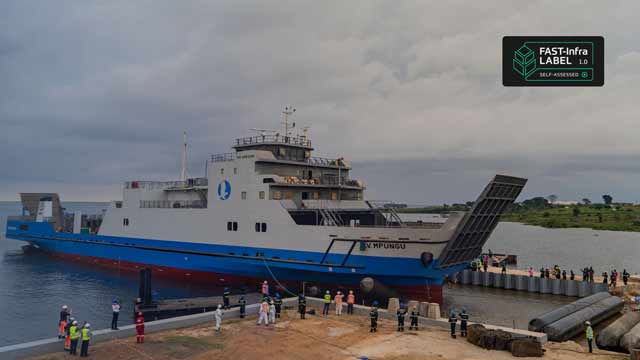
.jpg)




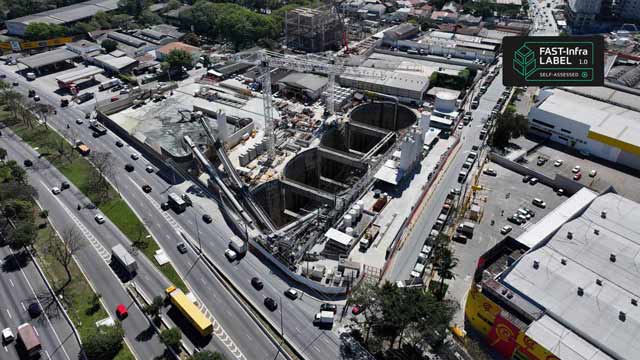













.webp)
.webp)


